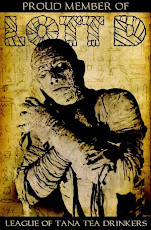Edgar Alan Poe’s ‘the Murders in the Rue Morgue’ is perhaps as recognizable in title as Mary Shelley’s ‘Frankenstein’ or Bram Stoker’s ‘Dracula’. However without the cognitive association with a character and thus a face of it’s own, the title just brings up shadowy images in the public consciousness. Perhaps, like an echo in a great marble train station, the sound of it alone reverberates in one’s mind yet only leaves a lingering and hollow sensation of something you should be familiar with, yet what it is eludes you. If this is true for you then read on fellow traveler.
Murders in the Rue Morgue is best known in literary circles as the first detective tale; first published in Graham’s Magazine in 1841. Following the grisly and mysterious murders of two women in Paris, Auguste Dupin, a young introvert with auspicious upbringing and little personal wealth, (yet still able to get along quite handily without an occupation), takes it upon himself to discover the true identity of the murderer without want of recompense. This theme would be modified and used again and again throughout detective stories. As for further details and discussion of the story, I will leave it here for you to explore for yourself if you are not already familiar with it.
How then has this short detective story become so well known in the realm of horror? To be perfectly honest I believe that has as much to do with the public’s lack of familiarity with the tale coupled with the simple fact that it was written by Edgar Allan Poe, himself synonymous with tales of the macabre. Certainly just the title in itself brings vivid images to mind that are equally if not more commonly found in horror. That is not to say the story in itself does not have such elements of horror within it. Take for example the fact that the murder victims are women, one elderly and frail and one young and presumably attractive. Even in today’s PC world with strong women role models there is a predominant underpinning of the idea that the female is the fairer, more delicate sex. There is something brutal, senseless and evil inherent in the idea of killing one which is not perceived as being able to protect themselves. In addition to that is the fact that the elaborate and graphic description of the murder scene is disturbing even by today’s standards.
The apartment was in the wildest disorder — the furniture broken and thrown about in all directions. There was only one bedstead; and from this the bed had been removed, and thrown into the middle of the floor. On a chair lay a razor, besmeared with blood. On the hearth were two or three long and thick tresses of grey human hair, also dabbled in blood, and seeming to have been pulled out by the roots. Upon the floor were found four Napoleons, an ear-ring of topaz, three large silver spoons, three smaller of métal d'Alger, and two bags, containing nearly four thousand francs in gold. The drawers of a bureau, which stood in one corner, were open, and had been, apparently, rifled, although many articles still remained in them. A small iron safe was discovered under the bed (not under the bedstead). It was open, with the key still in the door. It had no contents beyond a few old letters, and other papers of little consequence.
Of Madame L'Espanaye no traces were here seen; but an unusual quantity of soot being observed in the fire-place, a search was made in the chimney, and (horrible to relate!) the corpse of the daughter, head downward, was dragged therefrom; it having been thus forced up the narrow aperture for a considerable distance. The body was quite warm. Upon examining it, many excoriations were perceived, no doubt occasioned by the violence with which it had been thrust up and disengaged. Upon the face were many severe scratches, and, upon the throat, dark bruises, and deep indentations of fingernails, as if the deceased had been throttled to death.
After a thorough investigation of every portion of the house, without farther discovery, the party made its way into a small paved yard in the rear of the building, where lay the corpse of the old lady, with her throat so entirely cut that, upon an attempt to raise her, the head fell off. The body, as well as the head, was fearfully mutilated — the former so much so as scarcely to retain any semblance of humanity.
Murders in the Rue Morgue has become firmly entrenched in horror culture most notably by the 1932 feature film of the same title starring horror icon Bela Lugosi. As entertaining as the movie is however, it suffers from the same fate as many of Poe's works that have been adapted for film and only vaguely resembles the original piece. Rue Morgue would again reappear on the big screen in 1954 under the title Phantom of the Rue Morgue.
Now be warned if you want to read this story in it's entirety, and without the risk of vague spoilers, perhaps this is where we should part company for the day.
In addition addition to these cinematic versions which have outwardly taken ownership of the title, Murders in the Rue Morgue has spawned a whole horror sub-genre of “killer ape” movies throughout the forties and fifties which owe as much to this story as they do to King Kong.
Gary D Macabre





No comments:
Post a Comment